Marketing Automation at Birkenstock Helped the Company Change Their Organizational Structure, Find and Fix Sales Funnel Bottleneck, and Increase Sales
Marketing Automation at Birkenstock Helped the Company Change Their Organizational Structure, Find and Fix Sales Funnel Bottleneck, and Increase Sales
Challenges
Increase online store revenue
Solutions
Launch custom trigger workflows and bulk campaigns
Use machine learning algorithms in email campaigns
Use machine learning algorithms in email campaigns
Results
940% ROI from marketing automationEmails now generate 7.46% of the company’s total revenue
Integrated with:
OpenCart website
Birkenstock has a loyal customer base where at least one in five are repeat customers. To maintain satisfaction and loyalty, all communications are personalized. For Birkenstock, this means learning customers’ needs and wants to offer the most relevant products in email communications.
Using personalized recommendations in campaigns also reduces the chance of losing customers due to seasonal demand. This means that the company sells more shoes through a multi-trigger plan which increases the click rate while reducing the unsubscribe rate.
This outcome is due to an algorithm that predetermines the number and frequency of email campaigns per customer. It also allows the company to learn more about the needs of their customers and increase the size of their customer base through pop-up windows on the website.
Marketing Automation Results
-
940%Marketing automation ROI
-
7.46%Average share of email channel revenue within total company revenue
-
2,500 → 60,000Customer base growth
Maestra data, last click attribution method
-
2.1% → 5.1%Increase in the abandoned cart campaign conversion rate
-
33%Average CTOR (“click to open rate”; shows to what extent the email content engages customers)
Birkenstock internal report data, last click attribution method
940% ROI
To calculate the ROI, we took the revenue from email orders and web push notifications from November 2020 to July 2021, when the company actively began sending campaigns. The company holds a conditional margin of 20% using the last-click attribution method. At Birkenstock’s request, exact figures have not been disclosed.
With Maestra, every $1 invested in the platform yields $9.40, resulting in a 940% ROI for Birkenstock.
Campaign Revenue Share (Relative to the Online Store’s Total Revenue)

Data from Maestra “Campaign Summary Report”, attribution method: last click
The drop in September 2020 was due to the fact that the email channel was still in its early stages of development. This means that the frequency of bulk campaigns was being adjusted, and the customer base was growing.
In 2021, the order management system was still in the process of being connected, so not all orders were part of the Maestra system yet. Additionally, the low numbers from February to May can be attributed partly to a decrease in Birkenstock’s mass mailings. Email frequency is now determined by an algorithm, preventing any sudden revenue drops in the future.
In contrast, the October to December 2020 surge was related to seasonal promotions. For example, Black Friday brought in more than 5% of all orders in just 3 days. Meanwhile, the New Year’s promotion went brought in 2% of all orders in November and December.
Trigger-Based Campaign Revenue Share (Relative to the Online Store’s Total Revenue)
The decline in November and subsequent rise in December 2020 are due to changes in the approach to targeted communication. Since November 2020, tailor-made trigger scenarios have been sent to Black Friday and New Year’s Eve participants.
Why Birkenstock Chose Maestra
Before 2019, Birkenstock’s marketing had focused on retail stores and working with online marketplaces. In 2019, Birkenstock began developing its online store. The team started by integrating a CDP, as their existing email marketing platform did not allow them to work with their customer base to the full extent possible — i.e. they were unable to segment their customers, send out personalized campaigns, and work on increasing the number of subscribers. Birkenstock’s founder, COO, and web project manager chose the platform.
Developing our customer base is a priority for both our partners and Brandpool East. This meant we needed a quality tool to manage and further automate our marketing communication. At an industry exhibition, we learned about Maestra and compared them to other similar solutions using the following criteria.
— Successful cases in the fashion industry;
— Launching targeted communications;
— CDP features;
— Simple integration.
To us, simple integration is an essential aspect. We realized that Maestra had the right solutions and resources to perform an integration faster than any other platform.
Based on our criteria, other platforms did not show any significant advantage to Maestra.
A year later, based on our email channel growth results, we were convinced of the immense value Maestra would bring to our other projects
By Testing Campaigns, a Bottleneck in the Sales Funnel Was Discovered
We found an important bottleneck while analyzing the sales funnel and customer behaviors like how they choose items, at what stage they leave the website, and what is missing for order placement. Essentially, the problem our tests uncovered was that many customers left the website without ordering because they couldn’t decide on the right shoe size. Here’s how the marketing team found and fixed the problem:
- The team analyzed the behavior of customers in different channels by:
- Investigating requests to customer care services like marketplaces and call centers;
- Conducting in-depth interviews with customers in the retail store. The team inquired about how customers learned about Birkenstock, their main criteria for choosing a particular pair of shoes, and for what purpose they would buy them;
- Observing the behavior of site visitors — how and what they choose, how they place an order, and at what point they leave the site;
- Launching a survey on the site using a pop-up window, asking customers which Birkenstock features would they like to know more about.
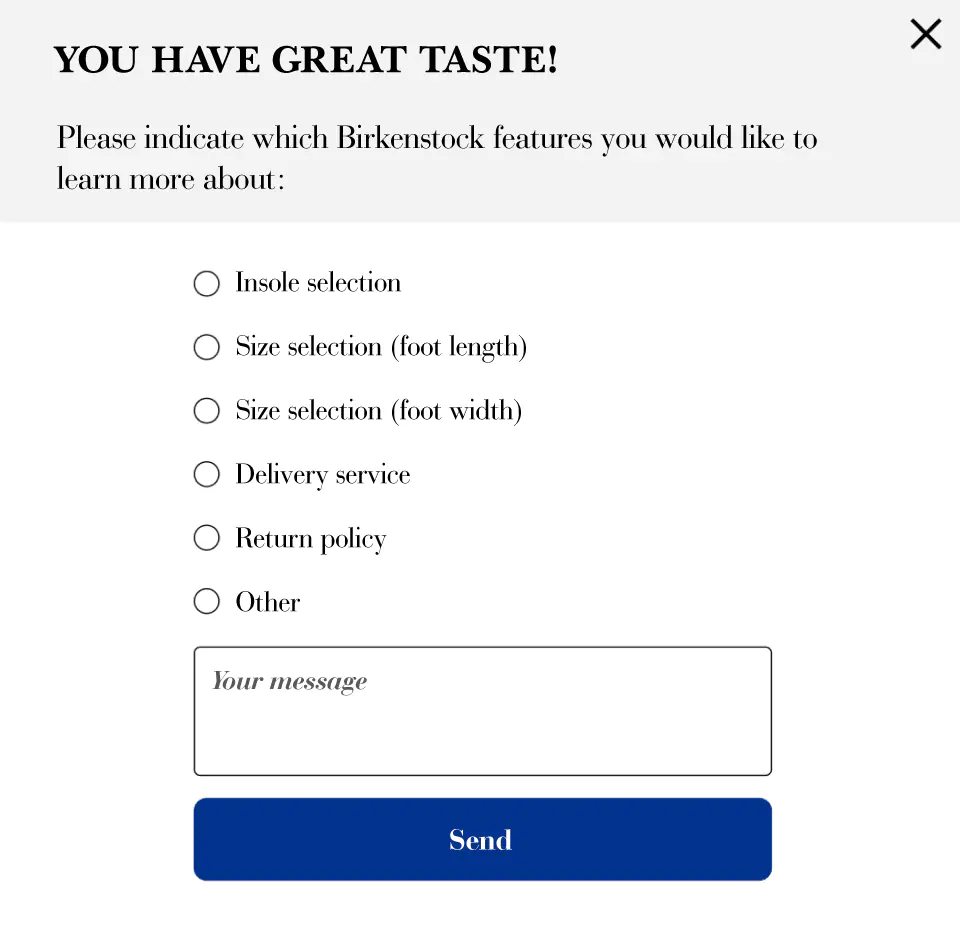
Pop-ups on websites. The survey helped us to better understand what kind of information Birkenstock customers are unaware of
- The team constructed a customer journey map (CJM) and identified customer touchpoints with the brand, pinpointing customer needs and problems.
- The team hypothesized that a new sizing guide would help customers to choose a size, removing the primary obstacle to a customer completing a purchase at checkout.

The old sizing guide in the product card is still available on the website

The new sizing guide in the abandoned cart email. The “Choose the right size” button leads to a PDF of the size chart
- The team tested the hypothesis by launching a new guide for the welcome sequence and abandoned cart. They also added a survey to each email to see if customers are able to order the size they need.
We try to determine the problems customers face and test specific hypotheses. Maestra helps us accomplish these tasks and has helped us become more flexible in terms of hypothesis testing.
We have noticed that the new size guide works better; 95% of the welcome series and abandoned cart survey participants now report that they have selected the correct size. Since then, there have been no additional calls to the call center requesting help with determining shoe size.
We will now use the new shoe size guide on the website as well.
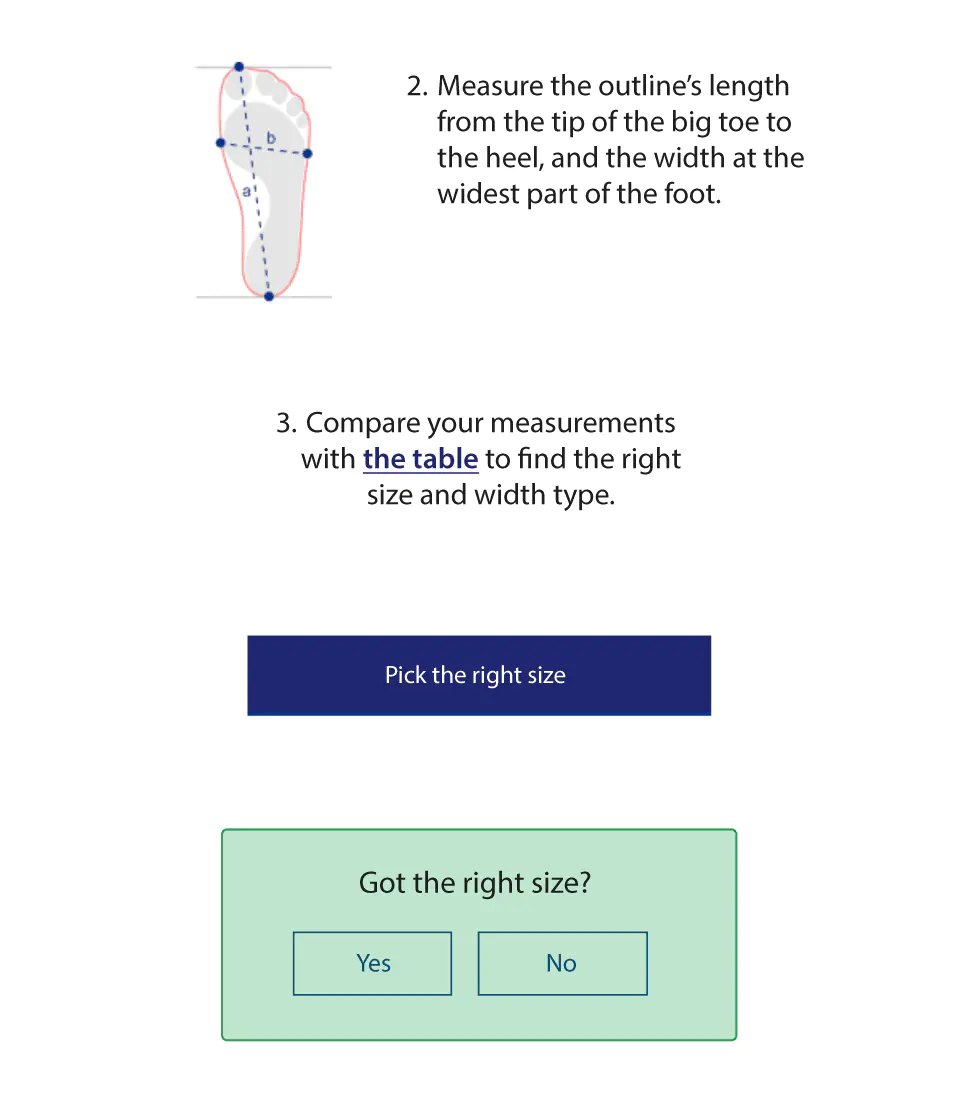
Sizing survey in an email that includes the new sizing guide
CDP Implementation Transformed the Entire Company Structure
Brandpool East used to have a strict division between departments. The product manager, customer care, and digital advertising departments had no overlaps that would allow them to develop the online store together. There was also an absence of a customer relationship management (CRM) department.
By introducing the Maestra CDP, they were then able to update the structure of the company to include a CRM department as well as a unified system that allows for information sharing and a better model for developing the Birkenstock brand.
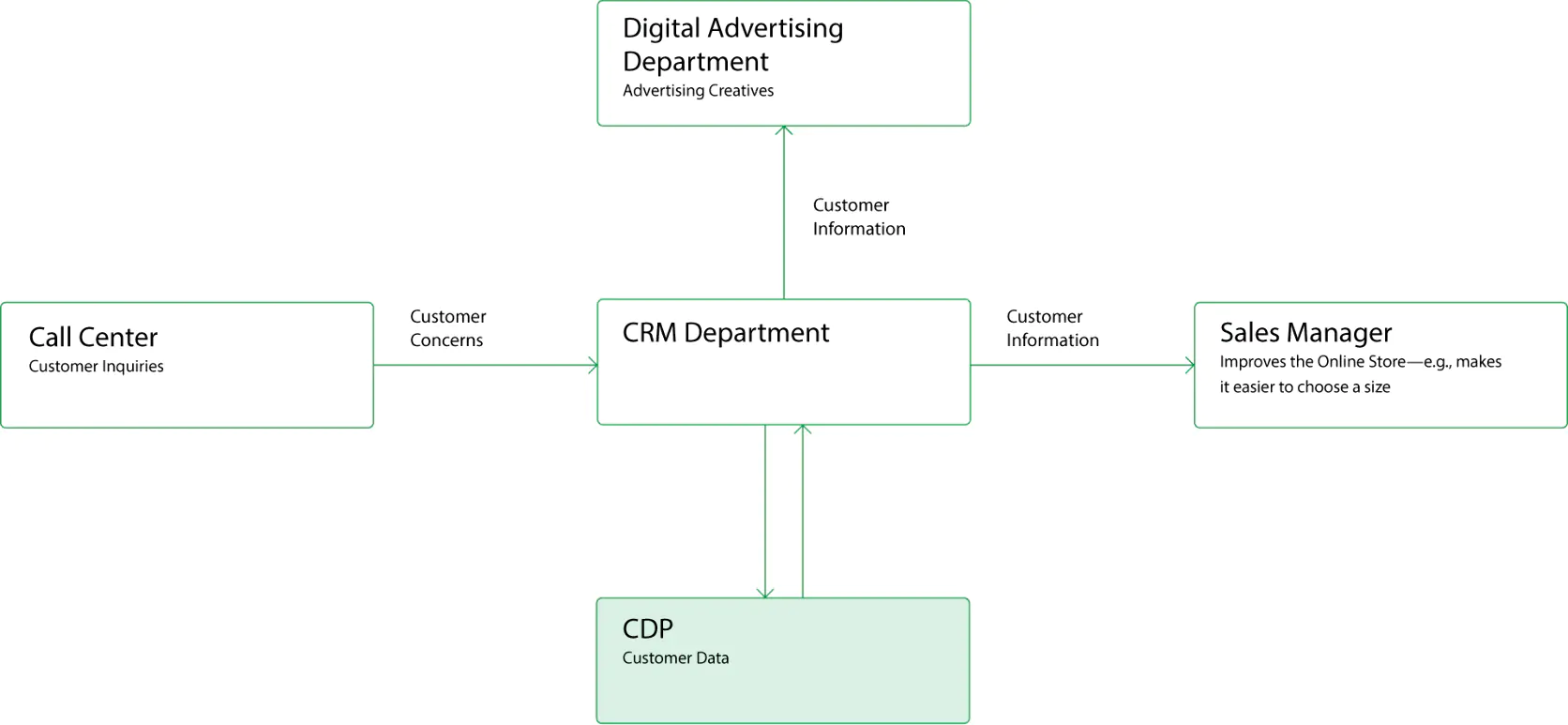
Birkenstock Company Structure Diagram
How our departments work now:
- The CRM department receives information about customer needs from the call center as part of its customer care service.
- The digital advertising department finds creative solutions based on the CRM department’s information about customers. One operational example would be when the CRM department surveyed customers on the website and discovered that customers who buy summer shoes do not know about Birkenstock’s fall models. This information inspired ideas for creating retargeting ads on Facebook. As a result, these ads now include fall shoe fashions.
- The sales manager uses customer information that the CRM department finds and verifies in promotional campaigns. This process explains how the CRM department discovered that customers usually do not complete orders because they can’t decide on a shoe size. This was then tested in email campaigns and a new sizing guide was launched. As a result, the conversion rate of orders from abandoned cart emails increased and the new guide will soon be posted on the website.
Fewer Customers are Lost During Peak Seasonal Demand
Summer is the primary season for buying Birkenstocks. Demand for popular models is high, and they are quickly sold out. To avoid losing customers who did not have time to buy the right pair, Birkenstock offers similar models through personal recommendations. They are generated automatically based on the models and sizes the customer has viewed on the website and on what other customers with a similar profile have bought.
All campaigns with personal recommendation algorithm show better results in A/B tests than campaigns without it. For example, in July, a recommendation after a subscription discount ranks fourth amongst all triggers in the number of attributed conversions (BI data).
This is why recommendations are now being used in almost all of our tailor-made trigger workflows. This includes the welcome sequence, waiting list, and abandoned cart.
Results of the waiting list campaign with personal recommendations:
Open rate
Click rate
Conversion rate
59.9%
11.5%
0.8%

Waiting list campaign with personalized recommendations
Automated Multi-step Workflows Boost Shoe Sales
Brandpool East utilizes a number of tailor-made trigger scenarios.This means that many events can take place within a single trigger scenario. The abandoned cart workflow was the first to be implemented and an A/B test was launched to see how it performed:
Hypothesis.A series of four emails will bring more order conversions than a single email.
Test.One section of the audience received one email campaign, while the other section received a series of four emails.
Result. The average multi-trigger conversion rate was 5.8% with a 95% confidence level. At the same time, one abandoned cart email resulted in a conversion of 2.1%.

Abandoned cart test results. Conversions of the multi-step workflow vs the single email. Data collected using the last-click attribution method in Birkenstock's analytics
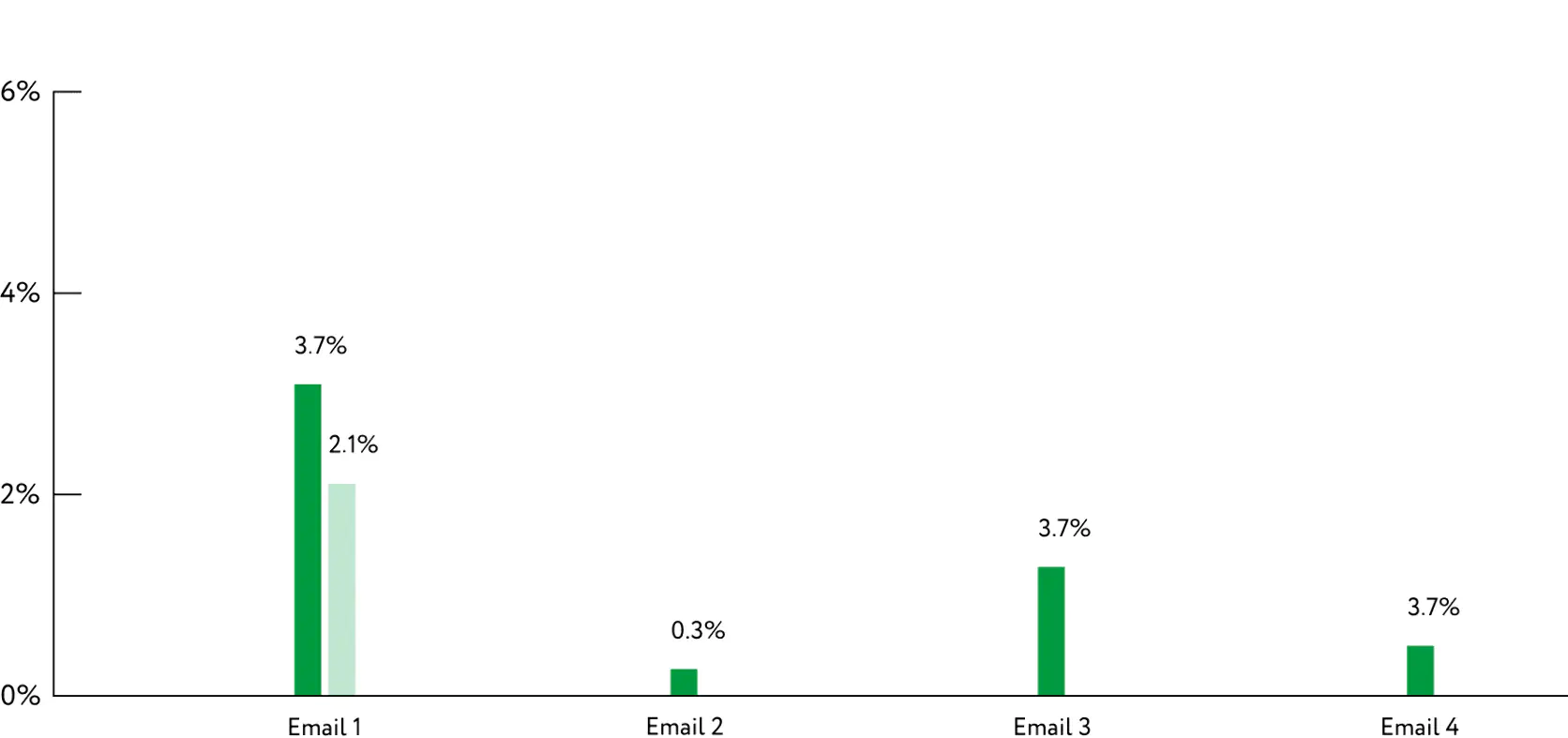
Conversion of each email in the multi-step workflow. The design of the first email in the multi-step workflow and the single email were different, which impacted the conversion rate
Multi-step abandoned cart workflow:
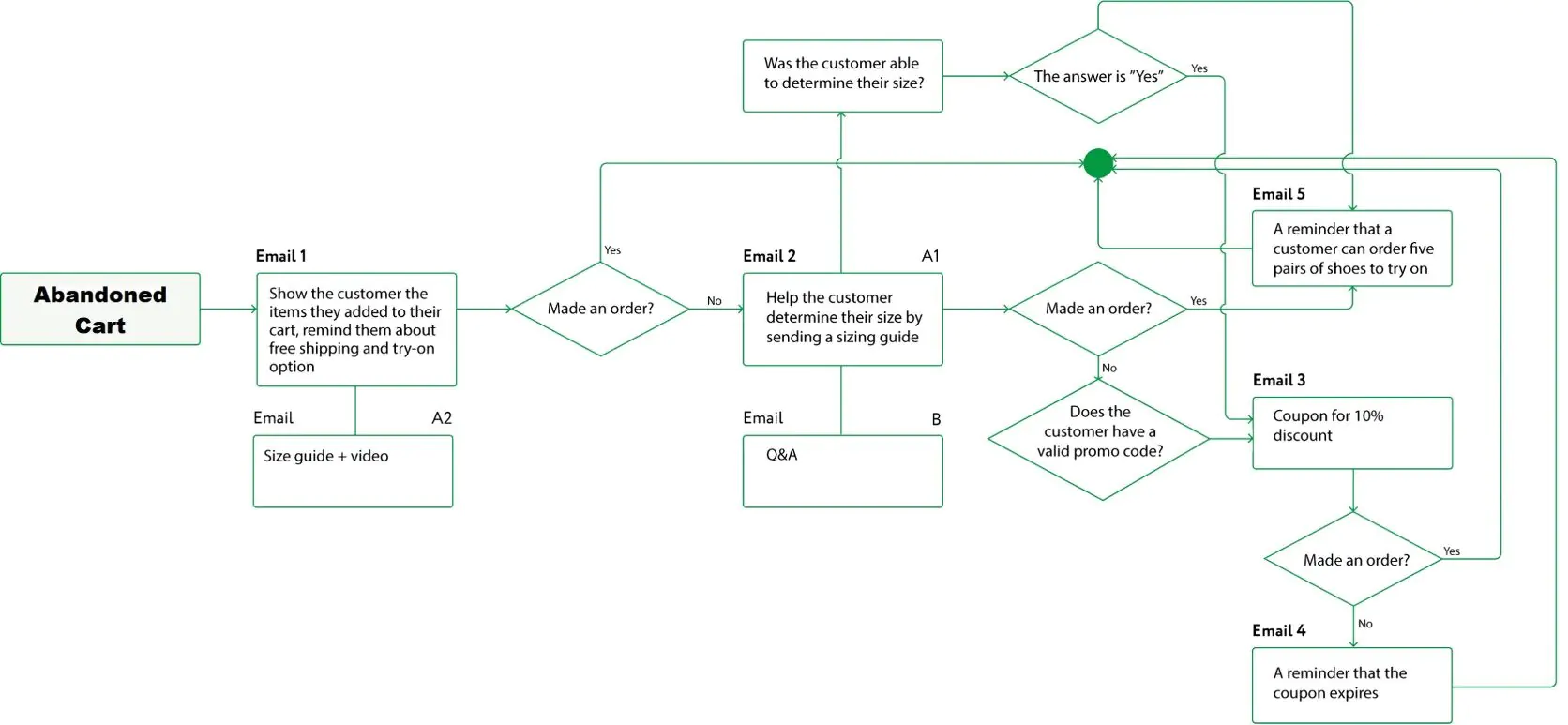
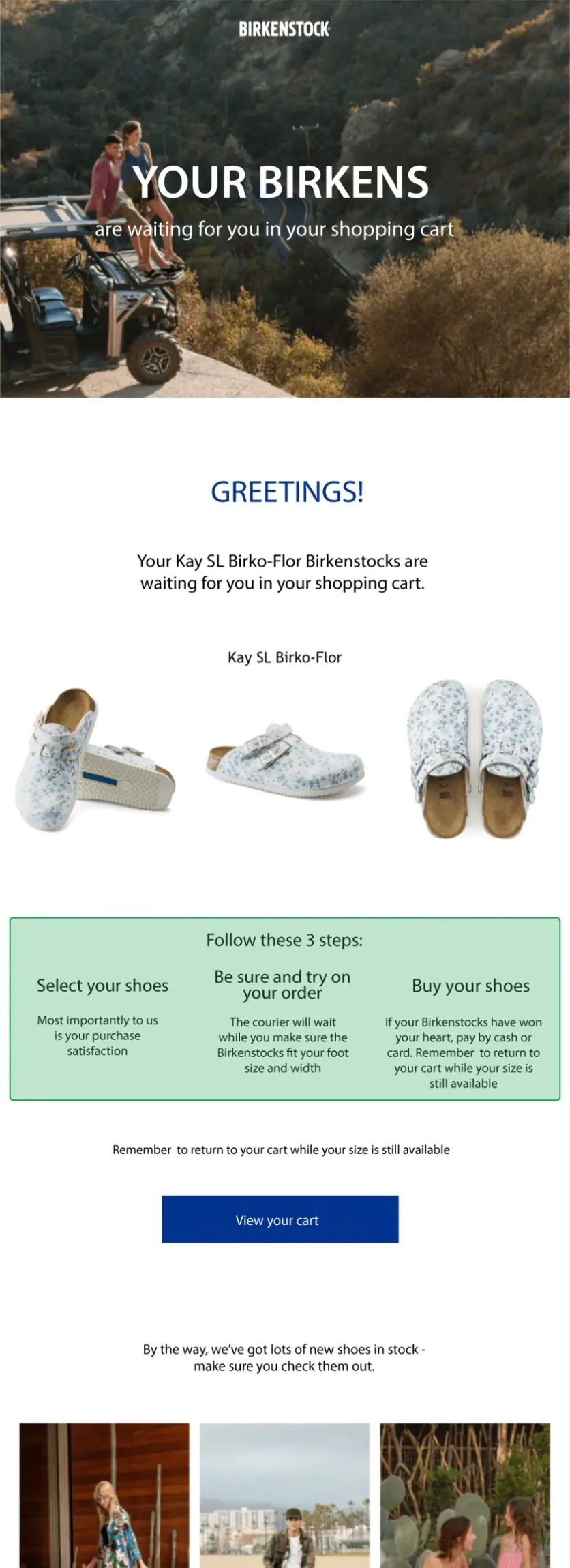
Single abandoned cart email
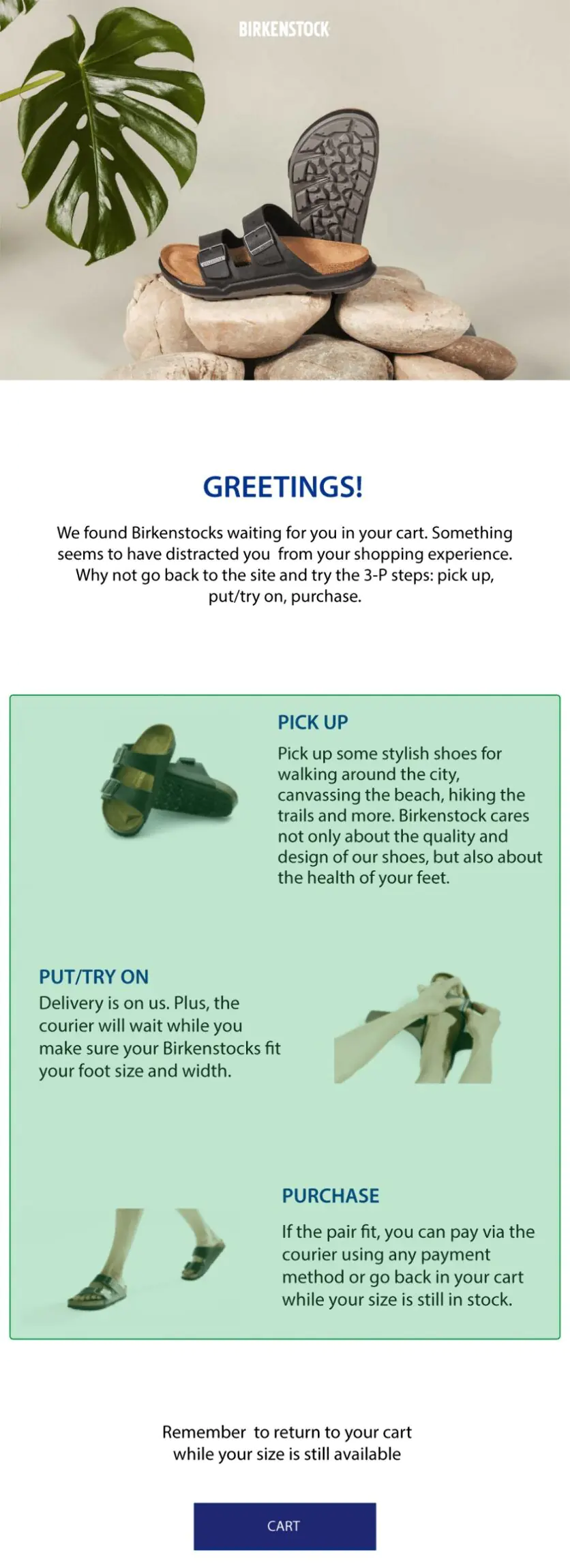
The first email in the multi-trigger workflow contains more details on benefits for customers
The first email in the multi-step email workflow had a conversion rate of 3.7% versus 2.1% from the single email. This is probably due to the change in email design. The next three emails within the sequence gave an additional conversion boost.
A distinctive feature of Maestra is the ability to flexibly configure CDP-based trigger communications and segmentation.
The application of Maestra as a key solution to the challenges of modern-day marketing communication is so broad that I think some challenges, including product features, are still on the cusp of being converted to their full potential.
Controlled Email Frequency Prevents Customer Communication Overload
A comfortable frequency of campaigns is automatically selected for each subscriber. If a subscriber is interested, opens their emails, visits the website through emails and other channels, places orders, etc., then the frequency of communications is maintained or gradually increased. If their interest decreases, then the campaign frequency decreases as well. This way, customers view our communications as interesting and helpful, rather than feeling spammed. It also means that they click on the email links to the website more often and in turn unsubscribe less often. Average campaign results, Maestra data:
Unsubscription
Click rate
Without the algorithm, from July 2020 to April 15, 2021
1%
6.9%
With the algorithm, from April 15 to July 8, 2021
0.9%
9.7%
Pop-up Surveys Help Discover Audience Needs
Website visitors were asked four questions: why did you choose Birkenstock shoes? For whom do you choose them — men, women, or children? What shoe qualities are important to you? Have you purchased Birkenstocks before?
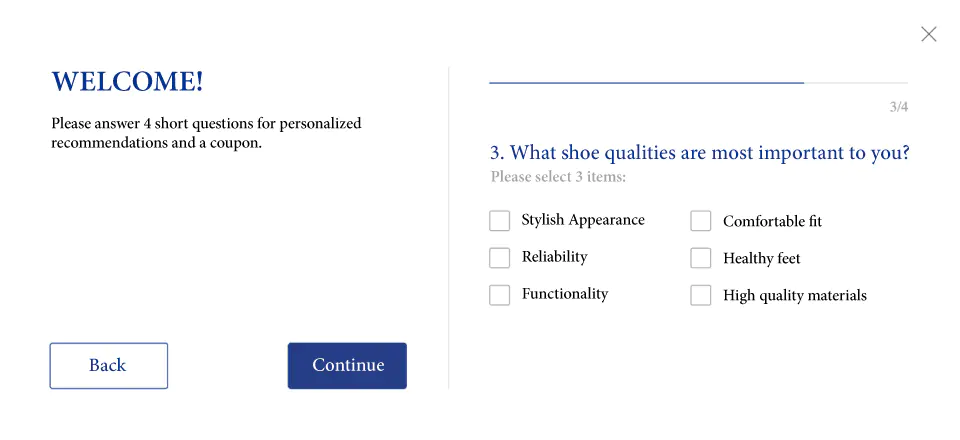
Sample of the pop-up survey for website visitors
According to Birkenstock’s results, style and health are important selection factors for 70% of their customers. This confirms the brand’s core strategy, which states that Birkenstocks are not just orthopedic shoes, but are also seen by customers as stylish and good for feet.
Another survey showed that customers often choose Birkenstocks as a gift, while 20% of customers choose Birkenstocks for sporting activities. This knowledge is helpful to us. For example, when I draft an email copy’s terms of reference for a copywriter, I always attach specific survey results for reference. This makes bulk mailings more targeted and specific. It means that you can send them to specific segments, depending on subscribers’ responses to the survey.
For us, Maestra’s pop-up windows present a flexible solution. They allow us to quickly develop the feedback format we need, and likewise get rapid feedback from customers. We ask our customers feedback questions such as whether they find order placement convenient, why they abandon their carts without ordering, and what information about our shoes should be added. For us, the entire experience is extremely convenient and useful.
Increasing the Customer Base through Pop-up Windows on the Website
We determined the best time to show a pop-up window with a subscription form and increased the number of purchases:
Hypothesis.If we show a pop-up window to visitors after 30 seconds, instead of 15 seconds, the number of conversions will increase.
Test.Two audience groups, each viewing one of the two possible pop-up windows.
Result. The pop-up window that appeared on the website after 30 seconds won with 100% certainty. The purchase rate was 3.07% versus the 15-second variant’s rate of 2.21%.
-
6%of pop-up windows convert into subscriptions
Using these results, we increased the conversion rate of the pop-up window with the subscription form. We then launched a pop-up window with a subscription form without a coupon, and likewise a pop-up with a coupon. Birkenstock’s results showed that without a coupon the conversion rate was 1.5-2%, while with a coupon the conversion rate reached 6%.
We decided to test one additional hypothesis:
Hypothesis.If website visitors don’t have to enter their email address in exchange for a coupon, they will be more likely to place orders.
Test.One audience group sees a pop-up window with a coupon and doesn’t have to enter their email address, while a second group sees a pop-up with a subscription form, requiring them to enter their email address in exchange for a coupon.
Result. With a 95% confidence level, no significant difference was found. That is, website visitors willingly leave their email, which means customers trust Birkenstock.
Plans for the Development of Direct Marketing
- Introduce a predictive scoring method of customer turnover. This will help us to identify when customers leave and provide an understanding of how we can retain that type of customer’s interest. To do this, we have already implemented the Google BigQuery database platform and plan to integrate it with Maestra.
- Add personal recommendations to the website’s catalog and product card.
- Help customers better adapt to their shoes. Surveys have shown that many customers find it difficult to get used to their first pair of Birkenstocks because of the orthopedic features on the insole. To avoid leaving customers feeling uncomfortable and unsure, Birkenstock is preparing informational materials that will explain to customers how to quickly get used to the insole and properly break in their shoes.
I want to personally thank our Maestra manager, Irina Alieva, for her prompt involvement in integration and new campaign configuration, her openness to new ideas, and her willingness to discuss challenges and share positive experiences. I would also like to thank the Maestra support team whose service is 10 out of 10, working even on holidays and in the evenings.
I hope that our case study will be useful for different businesses to effectively employ Maestra and their talented team.


